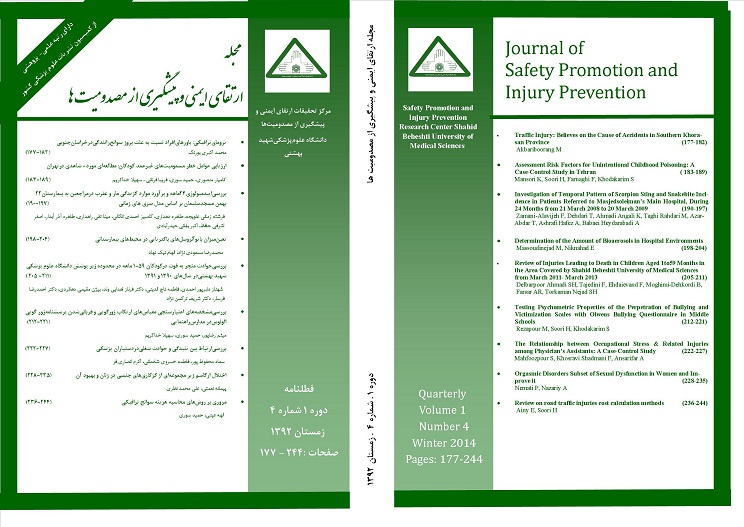ترومای ترافیکی: باورهای افراد نسبت به علت بروز سوانح رانندگی در خراسان جنوبی
ارتقای ایمنی و پیشگیری از مصدومیت ها,
دوره 1 شماره 4 (2014),
20 April 2014,
صفحه 177-182
https://doi.org/10.22037/meipm.v1i4.6092
Backgrounds and Objective: In order to study the cause of accident fatalities, we should look at social dimensions of this issue and discuss about common behaviors and norms in society and the necessity of behavior modification. This study has been designed to carry out survey individual believes in relation to cause of accidents.
Materials and Methods: This study is descriptive. For collecting information, we have used researcher-made questionnaire. This questionnaire has studied the accidents causes from these three dimensions: driver, fate, and chance and other factors (road, car quality). After codification, validity and reliability of the tool has surveyed for implementation and after modifications and assurance of the validity of tool, the study implemented. The inferential and descriptive statistics (variance analyze, Pierson correlation, and T-test) have been used for analyzing obtained data.
Results: Result of study revealed that subjects attributed the cause of accidents to these factors: driver, fate, and other factors (road and car) and they conceived all these factors somewhat as effective cases. There was significant difference in the survey of the belief toward outbreak of accidents in terms of gender. Subjects who were resident in rural places believed that fate is more effective factor in accidents than urban residents while this difference was not significant statistically. There was significant difference between these two factors: age and belief that driver is the prime factor of accidents.
Conclusion: The results obtained suggested to practitioners and authorities change their attitude towards the fate of the driver as the main cause of road accidents to act to provide for the reduction of road accidents.
How to cite this article: Akbariboorang M. Traffic Injury: Believes on the Cause of Accidents in Southern Khorasan Province. Irtiqa Imini Pishgiri Masdumiyat (Safety Promotion and Injury Prevention).2014; 4(1):177-182.
